Discovering energy-smart tips to keep your home cool while conserving energy is not only beneficial for your comfort but also for the environment. In this comprehensive guide, we will explore a range of energy-smart tips and techniques to help you beat the heat without skyrocketing your energy bills.
With the rising temperatures, it is crucial to find cost-effective ways to cool your home while minimizing your carbon footprint. This guide covers a variety of topics, including:
- The significance of energy efficiency in maintaining a cool home
- Optimizing your air conditioning unit for maximum efficiency
- Insulation and weatherization techniques to keep cool air in and hot air out
- Strategies for passive cooling and natural ventilation
- Utilizing shade, curtains, and blinds effectively
- Tips for optimizing ceiling fans and other alternative cooling options
- The role of landscaping in reducing heat gain
- Smart home technologies and devices to enhance cooling efficiency
Get ready to transform your home into a cool and energy-efficient oasis with these practical tips and expert advice. Keep your family comfortable, your energy bills low, and reduce your environmental impact all at once!
Table of Contents
Energy-Saving Tips for Cooling Your Home
1. Adjusting Thermostat Settings
When it comes to cooling your home efficiently, adjusting thermostat settings can go a long way. By finding the optimal temperatures for energy efficiency, you can reduce your energy consumption while keeping your home cool and comfortable.
- Set your thermostat to the highest temperature that is still comfortable for you and your family.
- Consider using a programmable thermostat, which allows you to automatically adjust the temperature based on your schedule. This way, you can avoid cooling an empty house unnecessarily.
2. Using Window Coverings Effectively
Your windows are a major source of heat gain in your home. By using window coverings effectively, you can block direct sunlight and reduce the amount of heat that enters your home.
- Install blinds or curtains to block direct sunlight during the hottest parts of the day.
- Consider using reflective materials for your window treatments. These materials can help to bounce the sun’s rays away from your home, keeping it cooler.
3. Efficient Use of Fans or Air Conditioning
Fans and air conditioning are essential for keeping your home cool. However, using them efficiently can help to reduce your energy consumption.
- Maximize fan usage to improve air circulation in your home. Using ceiling fans or portable fans can help to distribute cool air more effectively.
- When using your air conditioner, set it to a moderate temperature and avoid turning it too low. Every degree can make a difference in energy consumption.
Read More on Why Container Shortage Compromise Global Logistics And Trade
Home Insulation for Cooling Efficiency
A. Insulating Walls
Proper insulation is crucial to keeping your home cool. By insulating your walls, you can prevent heat from seeping into your living spaces, allowing you to maintain a comfortable temperature even during the hottest days.
Consider these types of wall insulation materials:
- Fiberglass insulation: This type of insulation is affordable and effective. It comes in rolls or batts and can be installed in your walls to reduce heat transfer.
- Spray foam insulation: Ideal for filling gaps and cracks, spray foam insulation provides an airtight seal that minimizes heat infiltration.
- Cellulose insulation: Made from recycled materials such as newspapers and cardboard, cellulose insulation is eco-friendly and provides excellent thermal resistance.
| Image | Product Title | Features | Price |
|---|---|---|---|
 | Buy on Amazon | ||
 | Buy on Amazon | ||
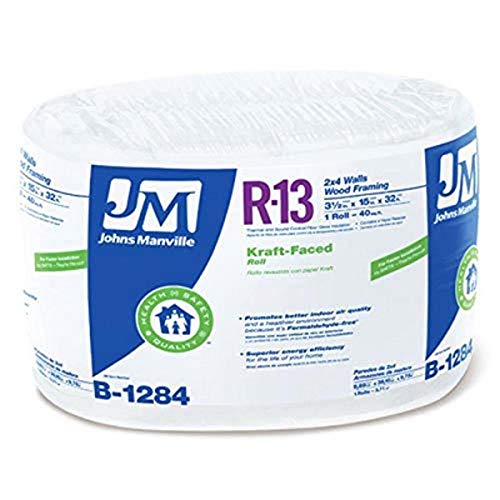 | Buy on Amazon |
B. Roof Insulation
Investing in roof insulation offers several benefits when it comes to cooling your home. It reduces heat gain from the sun, keeping your interior cool and comfortable.
Consider these roof insulation techniques:
- Radiant barrier insulation: This type of insulation reflects heat away from your roof, preventing it from penetrating into your living spaces.
- Spray foam roof insulation: Applied directly to the underside of the roof, this insulation creates a barrier against heat transfer, improving your home’s energy efficiency.
- Rigid foam insulation: Offering high R-values and moisture resistance, rigid foam insulation is an effective choice for insulating your roof and reducing heat gain.
C. Windows and Doors Insulation
To prevent heat gain through windows and doors, it is essential to address their insulation.
Consider these methods for insulating windows and doors:
- Sealant or weatherstripping: Apply sealant or weatherstripping around windows and doors to eliminate drafts and prevent heat transfer.
- Window treatments: Install window treatments such as blinds, curtains, or solar shades to improve insulation and block out excessive sunlight.
Air Conditioning Maintenance for Optimal Cooling
To maximize the cooling efficiency of your home, it is crucial to regularly maintain your air conditioning units. By following these simple maintenance tips, you can ensure that your AC operates at its best, keeping your home cool while saving energy.
A. Regular Cleaning of Air Conditioning Units
Cleaning your air conditioning units is essential for optimal cooling performance. Over time, dust and debris can accumulate, obstructing the airflow and reducing efficiency. Here’s why cleaning AC filters and coils is crucial:
- Improved Air Quality: Clean filters trap dust, pollen, and allergens, enhancing the indoor air quality and ensuring a comfortable living environment.
- Efficient Cooling: When coils are cleaned, heat transfer is improved, enabling your AC to cool your home efficiently.
- Longer Lifespan: Regular cleaning prevents strain on the system, extending the lifespan of your air conditioning unit.
Follow this step-by-step guide to clean your air conditioning unit:
- Turn off the power supply to your AC unit.
- Remove the air filter and wash it with warm, soapy water. Allow it to dry completely before reinstalling.
- Carefully clean the condenser coils using a soft brush or a vacuum cleaner with a brush attachment.
- Remove any debris or leaves that may have accumulated around the outdoor unit.
- Once everything is clean and dry, turn the power supply back on and enjoy the optimal cooling performance of your air conditioning unit.
B. Checking for Leaks or Duct Issues
In addition to regular cleaning, it is important to check for leaks or duct issues in your air conditioning system. Identifying common air conditioning leaks and fixing duct issues can greatly improve cooling efficiency. Here’s what you need to know:
- Identifying Common Air Conditioning Leaks: Leaks in your AC system can cause the refrigerant to escape, leading to reduced cooling capacity. Common signs of leaks include hissing sounds, ice buildup, and an inability to cool the space effectively.
- Fixing Duct Issues to Improve Cooling Efficiency: Inspect your ductwork for any leaks, gaps, or blockages. Sealing leaks and insulating exposed ducts will prevent cool air from escaping and minimize energy waste.
C. Professional Maintenance for Air Conditioning Units
While regular DIY maintenance goes a long way, professional servicing is essential to ensure the optimal performance of your air conditioning units. Here are a few benefits of professional AC maintenance:
- Optimal Performance: Professionals have the expertise to thoroughly inspect and maintain your AC system, identifying any potential issues and ensuring it operates at its best.
- Energy Efficiency: Professional cleaning and tuning of your unit can significantly improve its energy efficiency, leading to lower energy bills.
- Preventive Measures: Professionals can detect and address minor issues before they escalate, saving you from costly repairs or replacements.
It is recommended to schedule professional AC maintenance at least once a year. A typical checklist for professional servicing includes:
- Thorough cleaning of filters, coils, and condenser.
- Inspection and tightening of electrical connections.
- Lubrication of moving parts to minimize friction.
- Checking refrigerant levels and adjusting if necessary.
- Testing the thermostat for accurate temperature control.
By regularly cleaning your air conditioning units, checking for leaks or duct issues, and scheduling professional maintenance, you can ensure optimal cooling performance while reducing energy consumption in your home.
Read More on Best Poolside Container Plants – Stunning Pool Area Choices
Harnessing Natural Ventilation for Cooling
When it comes to keeping your home cool, harnessing natural ventilation can be a game-changer. By strategically using windows and creating efficient air pathways, you can maximize airflow and minimize the need for artificial cooling methods. Here are some techniques to help you make the most of natural ventilation:
A. Cross-ventilation Techniques for Natural Airflow
1. Positioning windows strategically for cross-ventilation
To encourage natural airflow, take advantage of the wind’s direction by positioning windows strategically. Open windows on opposing sides of your home to allow for cross-ventilation. This will create a pathway for the wind to enter and exit, effectively cooling your living spaces.
2. Creating pathways for efficient air circulation
In addition to opening windows, it’s important to create pathways that facilitate efficient air circulation. Clear any obstructions, such as furniture or curtains, that may obstruct the natural flow of air. By allowing air to move freely throughout your home, you can maintain a cool and comfortable environment.
B. Utilizing Ceiling Fans to Circulate Air
1. Benefits of using ceiling fans in cooling your home
Ceiling fans are not only stylish additions to your home but also effective tools for cooling. They work by circulating the air, creating a breeze that can make your space feel cooler.
By using ceiling fans in conjunction with natural ventilation, you can enhance the cooling effect and reduce the reliance on energy-consuming air conditioning units.
2. Proper fan settings and usage tips
To maximize the cooling effect of your ceiling fans, ensure that they are set to operate in the correct direction. During the summer months, the fan should rotate counterclockwise to create a downward airflow. Additionally, remember to turn off ceiling fans when you’re not in the room to conserve energy.
With these natural ventilation techniques and the use of ceiling fans, you can effectively keep your home cool while minimizing energy consumption. Stay tuned for more energy-smart tips on reducing heat gain in your home.
13 Energy-smart Tips to Keep Your Home Cool In Summer
1. Buy a Smart Thermostat
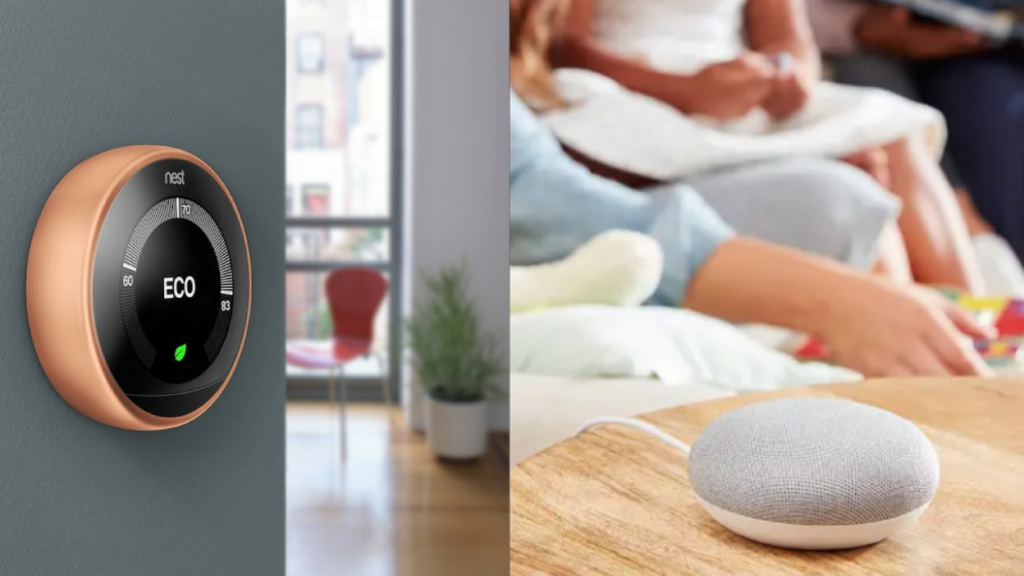
A smart thermostat is a perfect way to monitor temperature fluctuations and save you energy costs. Some of them have the flexibility to adjust temperature settings according to each person’s preferences.
For example, turning off when everyone leaves for work but coming back on at a lower temperature during nap time.
You can control others remotely via an app on your smartphone. This feature also means that you can set the heat level whether at home or not.
They’re also easy to install, remove your old thermostat and replace it with a compatible one. Usually by pressing a few buttons or installing an adapter kit.
2. Upgrade Your Water Heater
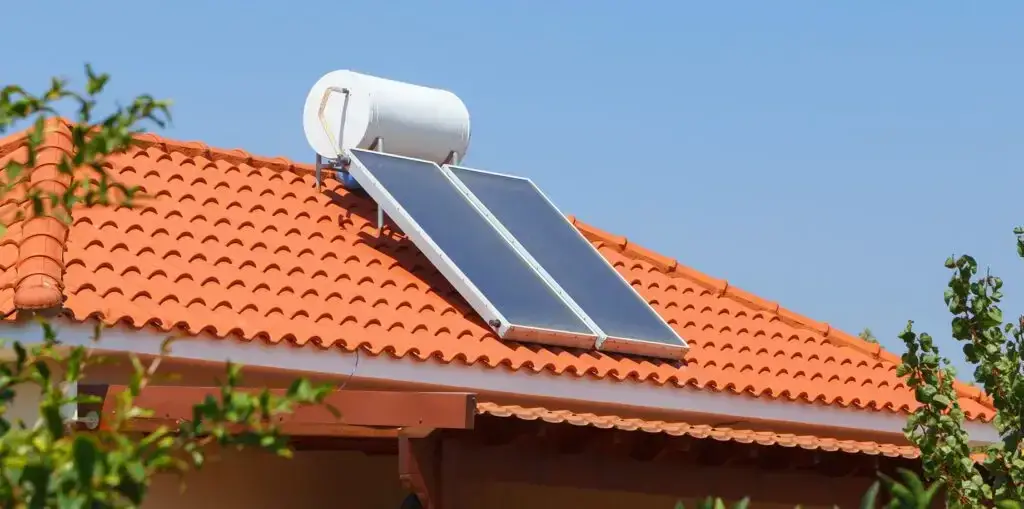
You probably think of your water heater as a passive appliance, doing its job in the background while you go about your day.
But it’s the second leading cause of home energy use. It costs U.S. households more than $1 billion annually, not to mention the environmental impact that comes with using fossil fuels to generate electricity for heat.
There’s a possibility that your heater could be retrofitted with an energy-smart model with similar functionality. This is possible if your heater is 10 years and below.
For example, if an electric water heater is well maintained and within its lifespan, there’s no need to replace it just yet.
Instead, try upgrading with energy-smart models like heat pumps or gas-fired heaters, which are much better at conserving energy than traditional hot water tanks.
They don’t require any ignition source such as natural gas lines or electricity supplies from utility providers.
Read More on Container Pools in NZ – Unparalleled Backyard Beauty
3. Insulate The House
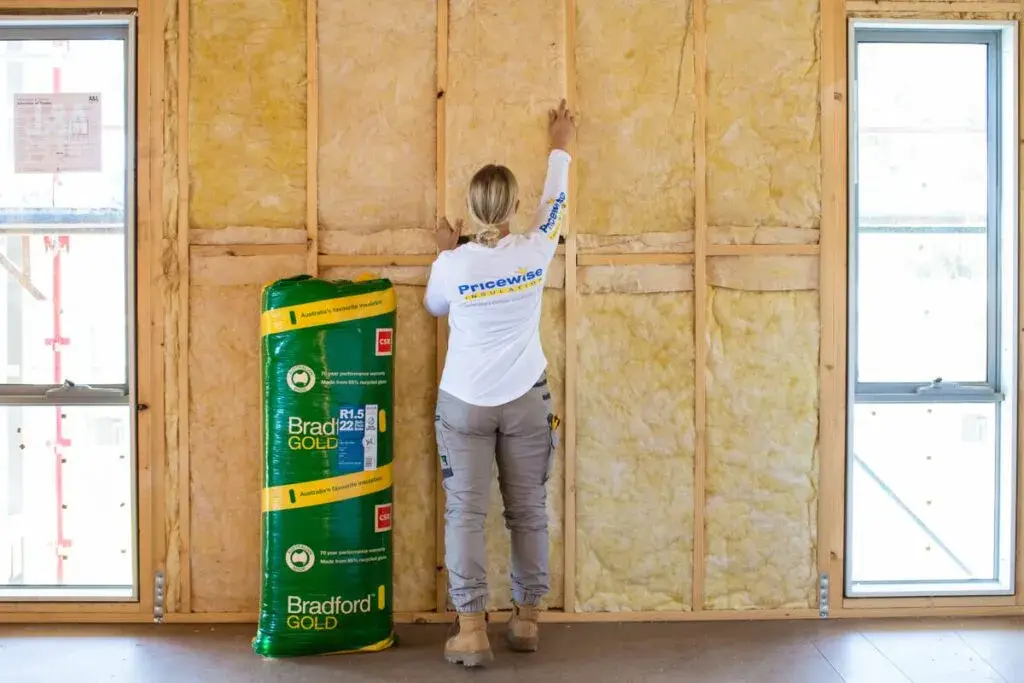
You want to insulate your home’s walls, ceiling, and floors. This can be done with fiberglass batts or blankets in your attic, ductwork, and garage.
If you have an unfinished basement, consider insulating it with spray foam to eliminate drafts. You should also insulate crawlspaces with polyurethane or rigid foam board insulation panels to keep heat from escaping through the floorboards while improving moisture control in your crawlspace area.
Finally, add weatherstripping around windowsills, doors, and caulking, so air doesn’t seep through cracks where they meet other surfaces.
4. Install Energy-Smart Windows
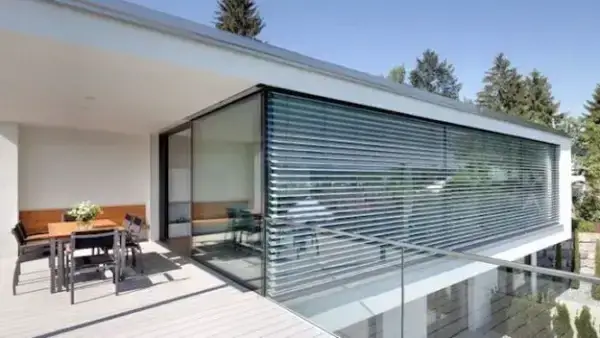
Energy-smart windows help keep your home comfortable, even when the mercury drops or rises. They also save you money on heating and cooling bills, which means more money in your pocket!
If you’re looking to install new windows, try using a window film instead of replacing them with traditional glass panes. Window films can help reduce UV rays while maintaining clear visibility from the inside out.
Awnings are another great way to increase comfort and style without sacrificing energy efficiency. You can choose several different styles of awnings depending on what suits your needs best:
- Retractable or stationary models that roll up for times when shade isn’t needed.
- Rollaway slatted shades for privacy.
- Wood shutters for a more rustic look.
- Canvas blinds fold down horizontally or vertically to block unwanted sunlight from entering through uncovered glass panels.
Read More on Luxury Container Hotels – Offering Unique Experiences
5. Photovoltaic Solar Panels
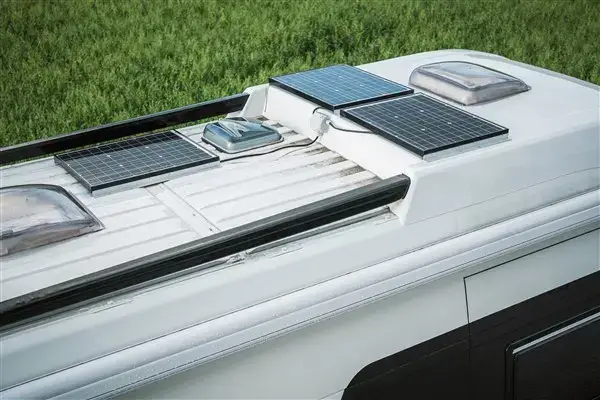
One of the best energy-smart home improvements you can make is installing photovoltaic solar panels.
This device converts sunlight into electricity, which can then be used to power your house and reduce your bills. Solar panels are also perfect for the environment because they don’t produce greenhouse gases when producing electricity.
Read More on Here Are The Best 15 Energy-Efficient Homes and Costs
6. Maximize the Use of Natural Light
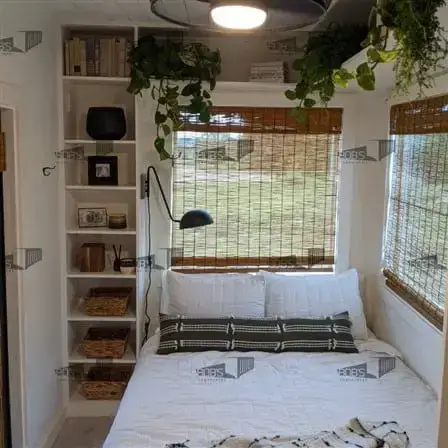
The easiest way to save energy is by using natural light; if you can turn off the lights, do it! But what if there are times when you need additional light in your home?
Artificial lighting is excellent for adding high-quality illumination and providing better visibility in dimly lit areas of your home. If you’re using artificial light, ensure you have the right bulbs for the job. Use daylighting whenever possible.
This means directing all available natural light into a room through windows by installing track lighting or directing window coverings like shades toward windows.
You’ll also want to use timers on any lights that stay on for extended periods, like nightlights or lamps that may be left on while no one’s home.
7. Install Energy-Smart Doors to Keep Your Home Cool
If you’re truly looking to maximize your energy savings, there are several factors to consider when choosing new doors.
First and foremost, it’s essential to remember that doors are a significant source of heat loss in the home. Make sure you replace old or damaged doors with ones with good insulation and low U-factors.
You should also choose Energy Star-rated products when possible. These will help you save on your energy bills while reducing greenhouse gas emissions associated with manufacturing a product that meets this standard.
Lastly, make sure that any new door is well-insulated so as not to add more heat loss into the home than necessary, and ensure it has high R-values so it can retain as much heat as possible during winter months!
8. Block Air Leaks
Air leaks can be a significant source of energy loss. Although it may seem a lot of work to find them, there is no shortage of places where the air is escaping from your home: around windows and doors; through electrical outlets; around pipes and ducts; through cracks in the foundation or attic floorboards, the list goes on!
The first step is knowing where they are likely to occur. Once you know what areas need attention, it’s time to look for leaks visually or with an infrared camera that highlights heat signatures.
Then all that remains is sealing up any gaps found using caulking products like those made by Green Glue Caulk & Sealant Systems.
Insulate Ductwork
Ducts are a common place for heat to escape. Ducts that are not adequately insulated can lose up to 40% of the energy they carry, leading to higher utility bills and increased greenhouse gas emissions.
The goodness is that there are a lot of ways you can improve the efficiency of your ductwork by adding or improving insulation:
Insulate Attic Ductwork
The attic is one of the best places in your home where you can add insulation because it’s typically easy to access, but if you don’t have an attic or aren’t comfortable climbing into it, consider hiring a professional for this project.
Insulate Basement Ductwork
The basement should also be well-insulated because it tends to stay warmer than other parts of your home during winter and cooler than other parts during summer, so heat from air conditioners doesn’t get trapped.
If you don’t have any insulation in your basement ceiling/flooring/walls/etc., hire an expert who can help improve its energy efficiency with these improvements!
Read More on 50 Beautiful Shipping Container Homes That Feel Like Home
Insulate Walls Around HVAC
Insulate these walls either inside or outside depending on whether they’re being used right now (elevate them off ground level)
9. Install Wind Power Systems
Wind power systems, like wind turbines and solar panels, are an excellent alternative for homeowners who live in areas with high winds but don’t have enough clear space to install solar panels.
Wind turbines can be installed on rooftops or towers in a backyard. However, they’re expensive to install and require maintenance because they need regular cleaning.
Also, keep in mind that wind turbines are noisy. You may want to consider installing them in an enclosed space or not placing them next to windows where you might hear the sound of spinning blades.
10. Consider Upgrading To Energy-Smart Home Appliances
When you’re looking for ways to reduce your carbon footprint and save money on your energy bill, the place to start is with home appliances.
If you have old appliances that aren’t energy-efficient, it’s time for an upgrade. The first thing you need to do is check the ratings of each appliance in your home. Each appliance should have an Energy Rating label, giving its power usage in kWh/year.
The higher an appliance’s rating (i.e., A++), the more efficient it will be at using electricity compared with other models of similar size and function.
As a rule of thumb: the lower number on the label (i.e., 0) means less energy consumption, while a higher number means more energy consumption per year.
It’s important to note that not all appliances fall into neat categories. For example, microwaves tend not to have labels because they use so little power relative to their size, but don’t let this deter you from making smart decisions about your purchases!
All types of household electronics should be evaluated based on their relative efficiency when determining whether or not they’re worth keeping around.
11. Install Energy-Smart Space Cooling Systems to Keep Your Home Cool in Summer
Space cooling is the process of transferring heat from one location to another.
Depending on your living situation and energy needs, there are several ways to cool down your home or office during extreme heat waves.
Energy-Smart Heat pump
This system uses electricity to transfer heat inside your home to a cooler outside source.
You can also use this same technique to heat a space in the winter, but because most people don’t want their homes freezing during winter, we’ll focus on how they can be used for cooling purposes instead.
Geothermal heat pump
This uses water as its primary medium for transferring heat and works similarly to how regular air conditioners do.
The main difference is that it helps you keep up with changing temperatures by drawing in additional water, if necessary, through pipes located underground near where you live or work, so no matter what time of year, it gets too hot outside!
Install Space Heating Systems
A heat pump is a great way to heat your home and save money. During the winter, it uses outdoor air to warm your home, while it reverses the process and cools it in the summer.
If you have an older home with no ductwork or insulation, upgrading those will help too! A wood stove is another cost-effective energy source for heating your house.
You’ll need to ensure that you have enough room for storage and that there are no flammable materials nearby, but aside from that, a wood stove is simple to install and maintain on your own.
If you live in a remote area where electricity is not available, or if you want the look of an old-fashioned fire without dealing with any maintenance, a pellet stove might be the solution for you.
Read More on Best 15 Home Energy Efficiency Improvement Plus Cost: 2023
12. Consider Energy-Smart Lighting
As a homeowner, it’s important to be aware of the weather’s effect on your home’s energy consumption.
When temperatures drop, your heating and cooling costs go up. That’s why it’s essential to consider some energy-efficient lighting upgrades that can help you save on this expense during the winter months.
Lighting is one aspect of your home that you have control over. You can do many things to improve its energy performance without having to make significant structural changes or investments in time or money.
13. Try Micro Hydro Electricity Systems
Micro hydroelectric systems can be installed in the backyard of your home or even on a small piece of land. They are easy to install and provide enough electricity to power an entire house or business.
Micro hydroelectric systems use water pressure from a nearby natural source, such as a pond or stream, to turn a turbine that generates electricity.
These turbines are similar to those used in large-scale hydroelectric plants, but they’re smaller and cheaper because they don’t require additional equipment like generators or transmission lines.
Strategies to Reduce Heat Gain in the Home
When it comes to staying cool and comfortable in your home, reducing heat gain is essential. By implementing these strategies, you can effectively minimize the amount of heat that enters your living space.
Blocking Direct Sunlight with Shades or Curtains
- Types of Window Coverings for Heat Reduction: Look for heavy-duty curtains or shades that have a high reflective or light-colored surface. These will block out the sun’s rays and prevent them from heating up your rooms.
- Installing Window Shades or Curtains Effectively: Make sure to install window coverings close to the glass surface, creating a tight seal. This will enhance solar heat reduction and keep your home cooler.
Using Reflective Materials to Reduce Heat
- Employing Reflective Roof Coatings or Insulation: Apply reflective coatings to your roof or install insulation with reflective properties. This will help deflect the sun’s rays and prevent heat from seeping into your home.
- Reflective Window Films or Shutters for Heat Reduction: Consider applying window films or installing shutters with reflective surfaces. These will effectively reduce heat gain by reflecting sunlight away from your windows.
Planting Trees for Shade and Cooling
- Selecting Appropriate Trees for Shade in the Summer: Choose trees that have broad canopies and dense foliage. These will provide ample shade and help cool your home by reducing direct exposure to sunlight.
- Benefits of Natural Shade from Trees: In addition to cooling your home, trees also improve air quality, create a pleasant outdoor environment, and enhance the aesthetic appeal of your property.
Selecting Energy-efficient Appliances for Cooling
A. Energy-efficient Refrigerators
When it comes to selecting energy-efficient appliances for cooling, your refrigerator is a great place to start. Older models tend to consume excessive amounts of energy, so investing in an energy-saving refrigerator can significantly reduce your cooling costs. Here are some features to look for:
- Energy Star rating: Look for refrigerators with the Energy Star label, as they are designed to consume less energy while still providing optimal cooling performance.
- Size and capacity: Choosing the right-sized refrigerator for your needs can prevent unnecessary energy consumption. Consider your family size and daily food storage requirements before purchasing.
- Adjustable thermostat: A refrigerator with an adjustable thermostat allows you to customize the cooling levels based on your needs, helping to optimize energy usage.
- Proper insulation: Look for refrigerators with proper insulation to ensure that cool air stays within the unit and does not escape, allowing for efficient cooling.
Furthermore, it’s important to follow these usage and maintenance tips to maximize the energy efficiency of your refrigerator:
- Keep the refrigerator door closed as much as possible to prevent cool air from escaping.
- Regularly defrost the freezer to maintain optimal cooling performance and energy efficiency.
- Ensure that the refrigerator coils are clean and free from dust or debris. Dirty coils can hinder cooling efficiency.
- Set the temperature to the recommended levels for the best balance between energy usage and food preservation.
- Arrange foods and items in a way that allows for proper airflow, promoting efficient cooling.
B. Energy-efficient Fans and Air Conditioners
In addition to a refrigerator, choosing energy-efficient fans and air conditioners can also contribute to keeping your home cool while minimizing energy consumption. Consider the following tips:
- Choosing energy-efficient fans: Look for fans with the Energy Star label, as they are designed to use less electricity while providing adequate airflow. Opt for fans with adjustable speed settings to further control energy usage.
- Evaluating the energy efficiency of air conditioning units: When selecting an air conditioner, look for units with a high Seasonal Energy Efficiency Ratio (SEER) rating. Higher SEER ratings indicate greater energy efficiency. Additionally, consider features such as programmable thermostats, which allow you to set cooling schedules and minimize energy waste.
By selecting energy-efficient appliances, you can keep your home cool while also reducing your carbon footprint and saving on energy costs.
Enhancing Cooling Efficiency with Smart Home Technology
Smart home technology offers innovative solutions to enhance cooling efficiency and optimize energy usage in your home.
By integrating these technologies, you can achieve a more comfortable environment while reducing your energy consumption. Here are some energy-smart tips to keep your home cool using smart home technology:
A. Smart Thermostats for Optimized Energy Usage
1. Features and Benefits of Smart Thermostats:
- Smart thermostats are designed with advanced features such as programmable schedules, learning algorithms, and remote control capabilities.
- They can learn your cooling preferences and adjust the temperature settings accordingly, optimizing energy usage.
- Some models can also provide energy consumption data and suggestions for further energy savings.
2. Integrating Smart Thermostats with Cooling Systems:
- Smart thermostats can be easily integrated with your existing cooling systems, such as air conditioners or heat pumps.
- Through wireless connectivity, you can remotely control and monitor your cooling system, adjusting settings as needed.
- Some smart thermostats can also work in tandem with weather forecasts to automatically adjust cooling settings based on external conditions.
Read More on How To Optimize Your Tesla Powerwall During A Power Outage
B. Automated Blinds or Curtains for Temperature Control
1. How Automated Window Coverings Enhance Cooling Efficiency:
- Automated blinds or curtains can be programmed to open or close at specific times, allowing for strategic control of sunlight and heat gain.
- They can keep the heat out during the hottest parts of the day and let in natural light when it’s cooler.
- Blocking direct sunlight can significantly reduce the need for excessive cooling.
2. Compatibility and Benefits of Automated Blinds or Curtains:
- Automated blinds or curtains can be synchronized with your smart thermostat, enabling temperature-based control.
- Some models can even be controlled remotely through smartphone apps, giving you flexibility and convenience.
- By optimizing natural light and shading, you can reduce cooling costs and create a more comfortable indoor environment.
C. Other Smart Devices for Energy-Smart Cooling
1. Using Smart Sensors for Temperature Monitoring:
- Smart sensors allow you to monitor the temperature in various zones of your home, ensuring efficient cooling and eliminating unnecessary energy wastage.
- They can provide real-time data on temperature changes and send alerts if adjustments are needed.
2. Integration of Smart Devices for a Cohesive Cooling Strategy:
- By integrating different smart devices, such as thermostats, sensors, and blinds, you can create a cohesive cooling strategy that optimizes energy usage.
- These devices can communicate with each other, making automatic adjustments based on specific conditions and preferences.
- This integration allows for a synchronized approach to cooling, maximizing efficiency and comfort.
With smart home technology, you can enhance cooling efficiency and keep your home cool while minimizing energy consumption.
By making smart choices and leveraging these innovative solutions, you can create a more energy-smart and comfortable living environment.
Incorporating Renewable Energy Sources for Cooling
When it comes to keeping your home cool, there are numerous energy-smart tips you can follow. But have you ever considered incorporating renewable energy sources into your cooling system?
Not only can this help you save on energy costs, but it also allows you to reduce your carbon footprint. In this section, we will explore two popular options for integrating renewable energy sources into your cooling system: solar panels and geothermal systems.
The Advantages of Solar Panels in Powering Cooling Systems
If you are looking for a sustainable way to power your cooling system, solar panels are a fantastic option. The installation process is relatively straightforward, and once in place, solar panels can generate electricity from the sun’s rays.
By harnessing solar power, you can cool your home while reducing your reliance on traditional energy sources. There are several benefits to installing solar panels for your cooling needs. Firstly, solar panels produce clean energy, which means you are contributing to a healthier environment.
Secondly, solar power is abundant and renewable, meaning you can enjoy free cooling for many years to come. Lastly, by utilizing solar energy, you can significantly reduce your energy bills, saving you money in the long run.
Utilizing Solar Power for Air Conditioning
One of the most common ways to incorporate solar power into your cooling system is by using it to power your air conditioner.
With the advancements in technology, there are now air conditioning units specifically designed to work with solar energy. These units convert the power generated by solar panels into cool air, keeping your home comfortable during hot summer months.
By using solar power for air conditioning, you not only benefit from reduced energy costs but also from a more sustainable way of cooling your home.
Additionally, some solar-powered air conditioning systems come with smart features that allow you to monitor and control your cooling settings remotely, further enhancing your energy efficiency.
Geothermal Systems for Energy-Smart Cooling
If you prefer a more geographically flexible option for renewable energy, geothermal systems may be the solution for you. Geothermal systems utilize the natural heat from the earth to cool your home efficiently.
These systems work by circulating water or refrigerant through underground pipes, where it absorbs the earth’s cool temperature and transfers it to your home.
There are several benefits to using geothermal systems for energy-smart cooling. Firstly, they have a high energy efficiency ratio, meaning you can cool your home while using less energy compared to traditional cooling systems.
Secondly, geothermal systems have a longer lifespan than conventional air conditioners, making them a durable and cost-effective choice for cooling your home.
It’s important to consider the cost and installation process of geothermal systems. While the initial investment may be higher compared to traditional cooling systems, the long-term energy savings make them a worthwhile investment.
Additionally, certain regions may require specific permits or assessments before installing geothermal systems, so be sure to check with local authorities before proceeding.
Lifestyle Changes for Energy-smart Cooling
When it comes to keeping your home cool and energy-efficient, making some simple lifestyle changes can go a long way. By adopting these habits, you can minimize heat generation in your home and reduce the strain on your cooling systems.
A. Minimizing Heat Generation in the Home
1. Using the oven less and opting for alternative cooking methods
Using the oven can significantly increase the temperature in your home. Instead, consider using alternative cooking methods like grilling, slow cooking, or using the stovetop. These methods generate less heat and keep your home cooler.
2. Adjusting cooking times to reduce heat buildup
Cooking during the cooler parts of the day, such as early morning or late evening, can help reduce heat buildup in your home. By adjusting your cooking schedule, you can keep your home comfortable without relying too heavily on your cooling systems.
B. Washing laundry with cold water
1. Energy and cost-saving benefits of cold water usage
Using cold water for your laundry not only saves energy but also helps preserve the lifespan of your clothes. Cold water washing can remove stains effectively while reducing the need for hot water, which can increase your energy consumption and utility bills.
2. Tips for efficient cold water laundry practices
When washing with cold water, use a cold water detergent specifically designed to work in lower temperatures. Sort your laundry by color and soil level to ensure efficient cleaning.
Also, consider air drying your clothes instead of using the dryer, as it can further reduce energy usage and heat generation in your home.
Exploring Energy-Saving Government Programs and Incentives
A. Home Energy Audits for Identifying Energy-Saving Opportunities
Are you looking for effective ways to keep your home cool while reducing your energy consumption? One great option to consider is a home energy audit.
By scheduling a professional energy audit, you can gain valuable insights into how to optimize your cooling efforts and save on energy bills.
1. Benefits of Professional Energy Audits for Cool Homes
A professional energy audit offers numerous benefits for homeowners who want to cool their homes efficiently. During an audit, a certified technician will thoroughly examine your property, identifying areas where energy is being wasted and making recommendations for improvement. These audits can help you:
- Uncover air leaks and drafts that allow hot air to infiltrate your home
- Detect and diagnose insulation issues that affect your cooling system’s efficiency
- Identify outdated or inefficient appliances and recommend energy-efficient replacements
- Pinpoint opportunities for better ventilation and natural cooling strategies
- Receive a detailed report outlining specific energy-saving measures tailored to your home
2. How to Schedule and Prepare for a Home Energy Audit
Scheduling a home energy audit is as easy as contacting a reputable energy auditing company in your area. They will arrange a convenient time to visit your home and conduct the assessment. To ensure a productive audit, it’s important to:
- Gather your previous energy bills to provide a comprehensive energy usage history
- Make a list of any specific concerns or areas you want the auditor to focus on
- Ensure the auditor has access to all areas of your home, including the attic and crawl spaces
- Be prepared to answer questions about your cooling habits and preferences
B. Rebates and Subsidies for Energy-Efficient Cooling Systems
In addition to home energy audits, government programs and incentives often offer rebates and subsidies for energy-efficient cooling systems.
These initiatives aim to encourage homeowners to invest in environmentally friendly cooling solutions while alleviating the financial burden.
1. Overview of Available Government Programs and Incentives
Government programs and incentives are designed to support homeowners in their quest for energy efficiency. These programs can vary by region, but most offer financial assistance and rewards for upgrading to energy-efficient cooling systems. Some common initiatives include:
- Rebates on the purchase of energy-saving air conditioners or heat pumps
- Tax credits for installing solar-powered cooling systems
- Subsidies for the installation of energy-efficient windows and insulation
2. Steps to Qualify for Rebates or Subsidies for Cooling Systems
If you’re interested in taking advantage of these incentives, it’s vital to understand the steps to qualify. While the process may differ depending on your location, the general steps typically involve:
- Researching available programs and incentives in your area
- Familiarizing yourself with the eligibility criteria for each program
- Gathering the necessary documentation and information for the application
- Completing the application accurately and submitting it on time
- Following up to ensure your application is processed and approved
Conclusion
In conclusion, implementing energy-smart tips to keep your home cool not only helps to create a comfortable living space but also contributes to significant cost savings and a reduced environmental impact.
Recap of Key Energy-smart Tips for Keeping Your Home Cool:
- Proper home insulation
- Maintaining your air conditioning unit
- Utilizing natural ventilation
- Reducing heat gain in the home
- Choosing energy-efficient cooling appliances
- Integrating smart home technology
- Incorporating renewable energy sources
- Making lifestyle changes
- Exploring government programs and incentives
It is essential to find the right balance between energy efficiency, comfort, and cost savings. Prioritizing energy-smart strategies may slightly adjust your cooling preferences or habits, but the long-term benefits far outweigh the minor adjustments.
Remember to implement these recommended tips not only during the summer but also throughout the winter season. Energy-smart cooling practices can enhance your home’s overall energy efficiency and sustainability.
Read More on 8 Of The Best Shipping Container Pools In Texas Builders

